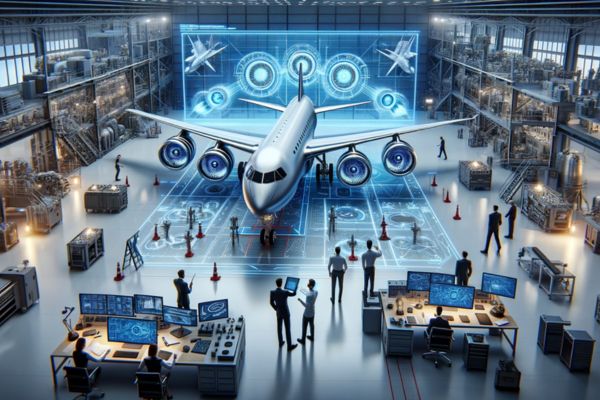Aircraft enclosures, including fuselages, nacelles, and equipment housings, have undergone significant advancements over the decades, driven by the demand for enhanced performance, reduced weight, and improved manufacturability. These components, essential to the structural integrity and operational efficiency of aircraft, now incorporate cutting-edge materials and manufacturing techniques, ensuring compliance with stringent industry standards and addressing evolving aerospace challenges. Consegic Business Intelligence analyses that the Aircraft Enclosures market growth is projected to reach USD 1,630.03 Million by 2032, driven by a robust CAGR of 7.1% from 2025 to 2032. In 2024, the market size was USD 981.55 Million.
Material Advancements: From Aluminum to Advanced Composites
Traditionally, aluminum alloys dominated the construction of aircraft enclosures due to their favorable strength-to-weight ratio, corrosion resistance, and ease of machining. However, the rise of advanced composites has redefined aerospace manufacturing. Carbon fiber reinforced polymers (CFRPs) and glass fiber reinforced polymers (GFRPs) are now widely used, offering significant weight savings without compromising structural performance.
Advanced composites provide superior fatigue and impact resistance, essential for enclosures subjected to dynamic operational stresses. Additionally, their anisotropic properties enable engineers to tailor material strength and stiffness to specific load paths, optimizing performance. For instance, the use of CFRPs in fuselage sections has reduced aircraft weight by up to 20%, directly contributing to fuel efficiency and decreased carbon emissions.
Beyond composites, metal-matrix composites (MMCs) and titanium alloys are increasingly employed in high-temperature applications, such as engine nacelles and leading edges, where thermal stability and durability are critical. The integration of hybrid materials combining metal and composite elements further enhances the adaptability of aircraft enclosures to diverse operational environments.
Advanced Manufacturing Techniques
Manufacturing processes for aircraft enclosures have evolved to meet the complexities of modern materials and designs. Automated Fiber Placement (AFP) and Automated Tape Laying (ATL) technologies have become pivotal in producing large composite structures with precision and repeatability. These automated methods reduce material waste, enhance production efficiency, and ensure consistent quality.
Additive manufacturing, or 3D printing, is revolutionizing the production of intricate components within aircraft enclosures. Using techniques such as Selective Laser Sintering (SLS) and Direct Metal Laser Sintering (DMLS), manufacturers can create lightweight, structurally optimized parts that were previously unachievable through conventional methods. These advancements enable rapid prototyping and reduced lead times, accelerating innovation cycles.
The adoption of high-precision machining and laser welding for titanium and other hard-to-machine materials has also been instrumental. These technologies improve joint quality and reduce assembly complexity, addressing critical challenges in nacelle and housing manufacturing.
Integration of Aerodynamic and Acoustic Innovations
Modern aircraft enclosures are not only structural elements but also play an integral role in aerodynamic efficiency and noise reduction. Computational Fluid Dynamics (CFD) simulations and wind tunnel testing guide the design of enclosures, ensuring minimal drag and optimal airflow management.
For engine nacelles, acoustic liners made from advanced composite materials significantly attenuate noise, meeting increasingly stringent regulatory requirements. Innovations in micro-perforated panels and multi-layer acoustic insulation are achieving unprecedented levels of noise suppression while maintaining lightweight construction.
Future Directions and Challenges
The future of aircraft enclosures lies in the integration of smart materials and embedded sensors. Piezoelectric materials and fiber-optic sensors enable real-time structural health monitoring, enhancing safety and reducing maintenance costs. Additionally, the development of thermoplastic composites promises recyclability and faster production cycles, aligning with sustainability goals.
However, challenges such as the high initial costs of advanced materials and the complexity of scaling novel manufacturing techniques persist. Collaborative efforts across the aerospace value chain—from material suppliers to OEMs—are essential to overcoming these hurdles and achieving widespread adoption.
In conclusion, the evolution of aircraft enclosures reflects the aerospace industry’s commitment to innovation, performance, and sustainability. By leveraging advanced materials, manufacturing processes, and integrated technologies, manufacturers are setting new benchmarks for safety, efficiency, and environmental stewardship in aviation.
Source: Aircraft Enclosures market

















